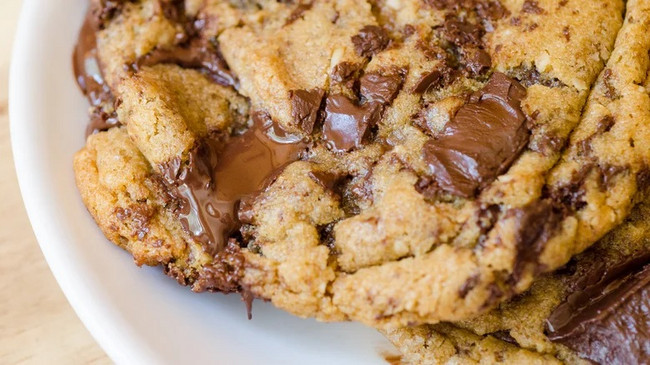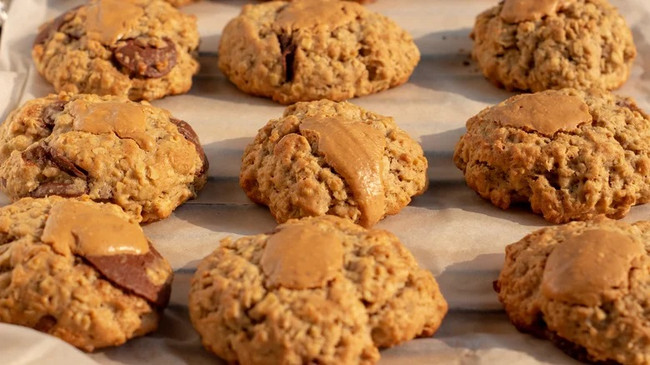✕



✕

Tag:Baking powder Secret ingredient Cookies 2023-09-20 14:14

Mandi J. Smith/Shutterstock
For those of us striving to make our ideal cookie, it's all about getting the perfect texture. Whether it's thin and crispy or soft and chewy, we know that certain ingredients will give us better results than others. The chewy cookie of your dreams needs to have the right amount of moisture, air in the dough, and some say a little bread flour. But for many bakers, the decision of whether to use baking soda or baking powder also comes into play. The use of baking soda creates a cookie that spreads more, which often yields a thinner and crispier result. If you're trying to create the best chewy cookie, baking powder is the way to go.
It can be easy to confuse the two, which are both used in baking. While baking soda is straight sodium bicarbonate, baking powder is a combination of baking soda (the base), cream of tartar or a cheaper monocalcium phosphate (a powdered acid), and cornstarch (a filler or thickening agent). Baking powder contains both a base and acid, so unlike baking soda, it only needs an acid-less liquid like milk or even water for a chemical reaction to occur, causing your dough to expand. But does the addition of baking powder mean the absence of baking soda? Absolutely not. Some of the best chocolate chip cookie recipes contain both leavening agents.
Baking powder has added benefits that baking soda doesn't

Ivan Bruno de M/Shutterstock
Cornstarch is often seen in recipes for soft and chewy baked goods, and this is another reason you should reach for baking powder. Saving you the necessity of another ingredient, baking powder already includes cornstarch. The cornstarch, which is often used to thicken custards and sauces, tempers the stiffness of gluten in the flour, keeping your cookies lightweight and chewy.
When double-acting baking powder was created in 1889, it was a game changer. While single-acting baking powder was activated when it came in contact with liquid, double-acting contains two different kinds of acid. The first adds carbon dioxide to the dough when it connects with liquid. The second creates even more gas when it's exposed to heat. This is great news for your cookies and baked goods, because not only does the dough rise after the liquid is added, but it rises again while baking in the oven.
Have you noticed that applesauce and brown sugar are popular in baked goods? It's because they add moisture, creating more carbon dioxide in the dough. Both are acidic, which means their inclusion will help activate baking soda. The acid won't help activate baking powder, but the moisture in them will, helping to create fluffier cookies. And if you do put your cookie dough in the fridge to chill — which pulls out some of the moisture — that second injection of acid will activate in the oven.
House of Lords report urges complete ban on junk food advertising
Clinical research finds daily pistachio consumption may “significantly improve eye health”
Nestlé taps diverse food trends with ready-to-prepare Asian and Mexican culinary products
USDA backs Campbell’s sustainable tomato cultivation efforts to propel “climate-smart agriculture”
Symrise bolsters regenerative farming to secure stable supply for natural ingredients
Daymer Ingredients to distribute Revyve’s egg-replacing texturizers in the UK
About Us Terms of Service Privacy Policy Contact Us
Hotline(+86)17301604571
 Enterprise WeChat
Enterprise WeChat
for Client Service
 EZBuy
EZBuy
WeChat APP
Sinoexpo Digital Platform
Shanghai Sinoexpo Informa Markets International Exhibition Co., Ltd. All rights reserved
沪ICP备05034851号-77
 沪公网安备31010402000543号
沪公网安备31010402000543号